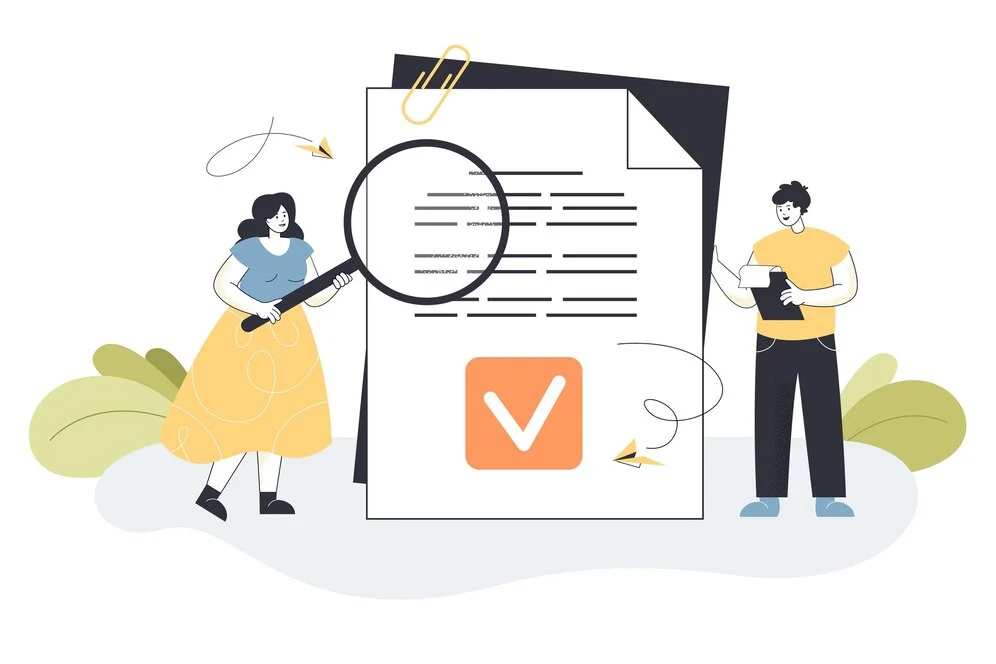Key Takeaways:
- Ensure your assignments are free from plagiarism to uphold academic integrity and avoid consequences like failing grades or damaged reputation.
- Use Turnitin to receive an originality report score that highlights areas needing attention before submitting your paper.
- While students can’t directly check through Turnitin, explore alternative options like instructor-approved draft modes, online checkers, or manual referencing.
- Incorporate your own analysis and insights to strengthen your work and showcase your unique contribution.
As students, ensuring that our assignments are free from plagiarism is crucial for academic integrity. In the field of academic writing, plagiarism can lead to severe consequences, jeopardising our grades and academic reputation.
One effective tool to detect plagiarism in our work is Turnitin. Before submitting our papers, it is essential to check them through Turnitin to receive an originality report score. This score indicates how much of our writing is original and how much may be sourced from other sources.
By learning how to check plagiarism on Turnitin before submitting, we can address any writing issues and ensure that our work is authentic and ethically sound.
Protect Your Brand & Recover Revenue With Bytescare's Brand Protection software
Why is it Important to Check Plagiarism?
It is important to check for plagiarism to ensure academic integrity and originality in writing.
Plagiarism is the act of using someone else’s work or ideas without giving proper credit, which is considered unethical and can have serious consequences such as academic penalties or damage to one’s reputation.
Checking for plagiarism helps to verify that the work is original and properly cited, and allows writers to give credit where it is due. This also helps to prevent unintentional plagiarism and ensures that proper research and citation practices are followed.
How Turnitin Detects Plagiarism?

Turnitin itself doesn’t actually detect plagiarism. It acts as a powerful tool to identify potential instances of it, leaving the final judgment to human analysis. Here’s how Turnitin works in the plagiarism detection process:
Text Submission: You (as a student) or your instructor submits your work electronically to Turnitin.
Massive Database Comparison: Turnitin scans your submitted work against its vast database of content. This database includes:
- Internet sources (web pages, articles)
- Academic journals and publications
- Student paper archives (helps prevent recycled content)
Similarity Report Generation: Turnitin generates a report highlighting areas in your work that match text within its database. This report typically includes:
- Percentage of your work flagged for potential plagiarism
- Color-coded highlighting of matching text snippets
- Links (when available) to the original source of the matching text
Human Review and Evaluation: The Turnitin report itself doesn’t determine plagiarism. Here’s where the instructor’s expertise comes in:
Instructors review the flagged areas in your work along with the source material provided in the report.
They consider factors like:
- Context: Is the matched content properly cited and attributed?
- Originality: Is the matched content a substantial portion of your work, or is it a common phrase or concept?
- Fair Use: Does your use of the material fall under fair use guidelines?
Based on this analysis, the instructor determines if plagiarism has occurred and takes appropriate action.
Important points to remember:
- A high similarity score doesn’t automatically equal plagiarism.
- Proper citations and referencing can significantly reduce flagged areas.
- Instructors use Turnitin as a detection tool, not a definitive judgment.
Protect Your Brand & Recover Revenue With Bytescare's Brand Protection software
Can Students Self-Check with Turnitin for Plagiarism Before Submitting?
Students cannot self-check a paper using Turnitin unless their institution has activated Turnitin Draft Coach for their account.
If an assignment permits multiple submissions, you can resubmit your paper several times before the due date. Any second or subsequent submission will replace the original in that assignment. You are allowed three resubmissions where the Similarity Report is generated immediately. After the third attempt, you must wait 24 hours for a new report.
If resubmissions are not allowed, your first submission is final. To check your paper in advance, you must ask your instructor to possibly set up a separate assignment for pre-checking. Instructors can also create assignments that allow multiple draft submissions without overwriting previous drafts.
Note: Please confirm with your institution whether Turnitin Draft Coach is available, as this feature enables students to easily check their documents for similarities, citations, and grammar against a comprehensive database.
How to Check Plagiarism on Turnitin Before Submitting?

Unfortunately, students cannot directly check their work for plagiarism on Turnitin before submitting through the standard student portal.
Turnitin is typically instructor-controlled, and they manage the settings for submission and plagiarism reports.
Here are a few alternative approaches to consider:
Ask your instructor: The most straightforward option is to inquire with your instructor about the possibility of a practice submission or a draft mode. Some instructors might enable features allowing students to submit draft work and receive a similarity report without affecting the official submission.
Use online plagiarism checkers: Several online plagiarism checkers are available, some with free versions. These can be helpful for a preliminary plagiarism check before submitting to Turnitin. However, it’s important to remember that these checkers might have smaller databases compared to Turnitin, so some matches might be missed.
Focus on proper citation: Ensure you correctly cite all sources you reference in your work. This significantly reduces the risk of unintentional plagiarism being flagged by Turnitin.
Manual cross-referencing (limited scale): For shorter works, you can manually check your references against the original sources (like books or journals) to identify any close matches you might have missed while citing.
Remember, Turnitin is a valuable tool for instructors to identify potential plagiarism, but the final judgment rests with them.
By using proper citation practices and exploring the options above, you can proactively minimise the risk of plagiarism concerns when you submit your work through Turnitin.
Protect Your Brand & Recover Revenue With Bytescare's Brand Protection software
How to Use the Plagiarism Report to Identify Potential Issues?
Using a plagiarism report effectively is a crucial part of the writing process, especially in academic settings. Here’s how to navigate through the findings of a plagiarism report to enhance the integrity of your work:
Review the Plagiarism Score: Start by examining the overall plagiarism score provided in the report. This metric gives a quick indication of how much of your document may be problematic, highlighting potential instances of plagiarism.
Analyze Matched Content: Most plagiarism detection tools highlight specific passages or sentences that match content from their paper repository or external sources. Scrutinise these sections to determine if they are common phrases, properly cited quotes, or instances requiring further paraphrasing.
Check Source Links: Plagiarism reports typically include links to the sources where matched text is found. Review these links to understand the context of the original text and decide whether deeper paraphrasing or clearer citations are necessary.
Evaluate Citations: Verify that all matched content is appropriately cited. Address citation issues if the report flags text that is already cited, as this could be a matter of how the content was paraphrased or the specificity of the citation.
Revise Paraphrasing: If large portions of your text closely mimic the original sources, revise these areas. Effective paraphrasing involves changing not just the words but also the sentence structure and expression of ideas, making them unique to your piece of writing.
Incorporate Original Analysis: Enhance your text by adding your own analysis, interpretation, and commentary. This not only helps to minimise plagiarism but also adds academic value by showcasing your personal insights.
Use Quotations Appropriately: Use direct quotes with quotation marks for any content that must be cited verbatim. Ensure that direct quotes are used sparingly and are necessary for supporting your points.
Consult with Educators or Peers: If unsure about aspects of the plagiarism report, seek advice from educators, mentors, or peers. They can provide guidance on best practices for revising your work according to the standards of academic institutions.
Run a Follow-Up Check: After revising, use plagiarism scanning tools to run another check. This ensures that all issues have been addressed and that your document falls within an acceptable range of originality.
Document Your Changes: Keep a record of modifications made after reviewing the plagiarism report. This can be crucial when discussing revisions with educators or for further verification.
Use Grammar Check: Incorporate a grammar check as part of your rough draft and revision stages to ensure clarity and coherence in your writing.
What’s Next?
Before submitting a student’s assignment file to educational institutions, it is crucial to thoroughly check for plagiarism.
Using official plagiarism detection tools like Turnitin can help detect any similarities between previous submissions, exact sources, and the student’s submission.
By comparing the draft version to a choice of repository, one can ensure that the percentage range of matching content is within an acceptable range. Additionally, running the original submission through a plagiarism checker like Bytescare can provide an alternative option for ensuring academic integrity.
For a comprehensive plagiarism check, consider using both tools. For more information, contact us.
The Most Widely Used Brand Protection Software
Find, track, and remove counterfeit listings and sellers with Bytescare Brand Protection software

FAQs
State the effectiveness of plagiarism scanning?
Plagiarism scanning tools are highly effective in identifying similarities between a submitted text and existing content from databases, academic journals, and the internet. These tools help uphold academic integrity by detecting potential instances of plagiarism, although they may not catch every instance, especially if the source is not in their database.
How to check Turnitin percentage of plagiarism before submitting?
To check the percentage of plagiarism in Turnitin before an official submission, you might need access to Turnitin Draft Coach or similar institutional setups that allow preliminary checks. Otherwise, you’ll need to ask your instructor to allow pre-submission checks through a designated assignment.
Can you check plagiarism for free?
Yes, there are several free plagiarism checking tools available online, such as Grammarly’s free version, and others. These tools can scan your text against web content to detect similarities but may not have as comprehensive a database as premium tools.
How to self-check for plagiarism score before submitting?
To self-check for a plagiarism score before submitting, use available online tools that offer free services or trial periods. Upload or paste your text into the tool, and it will analyse the content for similarities, providing a preliminary plagiarism score.
Are there any tips or tricks for using Turnitin to detect plagiarism?
When using Turnitin, ensure that your document is properly formatted, as poorly formatted texts can affect the similarity index. Also, always double-check that you have appropriately cited all sources. Familiarise yourself with Turnitin’s settings, such as excluding the bibliography and quotations, which can help focus the report on the main text.
Is there a certain percentage of similarity that is considered acceptable on Turnitin?
There isn’t a universally accepted “safe” percentage as it varies by institution and the nature of the assignment. Generally, a lower similarity score (below 25%) is often considered more acceptable, but this depends on the context and the elements included in the similarity count, such as quotations and bibliographies. Always consult your institution’s guidelines on acceptable Turnitin scores.
Ready to Secure Your Online Presence?
You are at the right place, contact us to know more.

